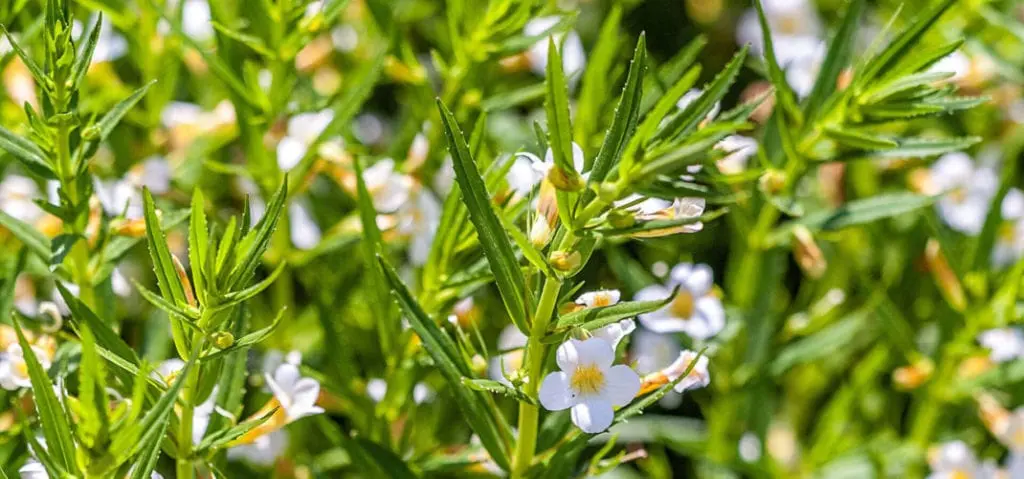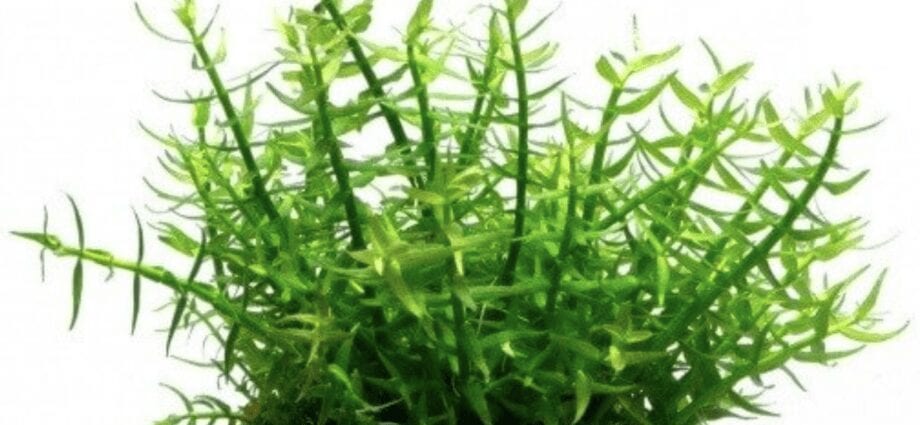Contents
Description
Periodically, in various phytotherapeutic recommendations, the name of such a plant as avran flashes. However, at present, the attitude towards him is not unambiguous. For example, modern German herbal medicine does not use it internally, but our books on herbal medicine contain a lot of recipes. Therefore, you probably need to try to understand and assess the risks of using this plant.
Avran officinalis (Gratiola officinalis L.) is a perennial herb from the plantain family (Plantaginaceae) 15-80 cm high, with a thin creeping, scaly rhizome. Stems are erect or ascending, often branched. Leaves are opposite, lanceolate, semi-stemmed, 5-6 cm long. Flowers are two-lipped, up to 2 cm long, white with a yellowish elongated tube and longitudinal purple veins, located one by one in the axils of the upper leaves. Fruits are multi-seeded capsules. Avran blooms in July, fruits ripen in late August – early September.
The spread of Avran
It is widespread almost throughout Russia, except for the Far North and the Far East. The plant is hygrophilous and is usually found in swampy meadows, swampy ash forests, bushes and along the banks of water bodies. It grows well on fertile and humus-rich, slightly acidic soils.
Avran infographics
- Difficulty growing – simple
- Growth rates are low
- Temperature – 4-25 ° С
- PH value – 4.0-7.0
- Water hardness – 0-10 ° dGH
- Light level – moderate or high
- Aquarium Use – Medium and Background
- Suitability for a small aquarium – no
- Spawning plant – no
- It can grow on snags, stones – no
- Able to grow among herbivorous fish – no
- Suitable for paludariums – yes
History

The ancient doctors did not know this plant – this is probably due to the fact that it simply was not widespread in the territory of Ancient Rome and Ancient Greece, it loves water too much. In the 15th century, European botanists described avran in herbalists, and doctors began to actively use it.
In Europe of the XVI-XVII centuries, it was almost idolized and actively used for dropsy, as a wound healing and effective laxative and diuretic, especially for gout (one of the German folk names of the plant is Gichtkraut, where the first part of the word means “gout”, and the second – “ grass”).
It was also used for skin diseases. The popular names of this plant in different regions of Russia also reflect its pharmacological properties: drislivets, bummer, feverish grass.
Application of Avran

Currently, due to the large number of complications in the form of irritation of the intestines, diarrhea with blood, spasms, pain during urination, inflammatory processes in the kidneys, cardiac disorders, Avran is practically not used in Europe in the form and in the quantities recommended earlier. Rather, in all reference books on toxicology, it is classified as a highly poisonous plant.
The aerial part of Avran contains triterpenoid compounds, including betulinic acid, gratiogenin, grathioside, cucurbitacin glycosides, verbascoside and arenarioside glycosides, as well as flavonoids – derivatives of apigenin and luteolin, derivatives of phenolcarboxylic acids.
It is able to accumulate trace elements such as selenium, zinc, copper and strontium. Above ground flavonoids have hypotensive properties. The plant extract exhibits antibacterial activity.
Dangerous properties of Avran

The aerial part is cut off during flowering, dried in a well-ventilated area. Raw materials retain their properties for no more than a year.
Avran’s raw material is poisonous! Cucurbitacins, which have irritating, laxative and cytotoxic effects, as well as gratiotoxin, which acts like digitalis drugs, are “responsible” for the toxicity.
Therefore, you should not use it yourself. First aid for poisoning includes activated charcoal, artificially induced vomiting, strong tea, and an early doctor’s call.
Herbalists use this plant, as a rule, in fees and in very small dosages. In particular, avran, along with more than two dozen plants, is included in M.N. Zdrenko, used as a symptomatic agent for papillomatosis of the bladder and anacid gastritis.
There is evidence that taking the herb infusion causes aversion to smoking. He, like calamus or bird cherry, changes the taste perception of tobacco smoke, provoking unpleasant sensations.
Outwardly, it is used in the form of a vapor (aerial parts steamed in boiling water) for skin diseases, rashes, bruises, hematomas and joints with gout.
But in homeopathy, Avran is used very actively at the present time. As a rule, use is made of a tincture prepared from fresh aerial parts of the plant in various dilutions for diseases of the gastrointestinal tract, inflammation.










